Category: Archives
How Samuel R. Delany Reimagined Sci-Fi, Sex, and the City
Julian Lucas at The New Yorker:
 In the stellar neighborhood of American letters, there have been few minds as generous, transgressive, and polymathically brilliant as Samuel Delany’s. Many know him as the country’s first prominent Black author of science fiction, who transformed the field with richly textured, cerebral novels like “Babel-17” (1966) and “Dhalgren” (1975). Others know the revolutionary chronicler of gay life, whose autobiography, “The Motion of Light in Water” (1988), stands as an essential document of pre-Stonewall New York. Still others know the professor, the pornographer, or the prolific essayist whose purview extends from cyborg feminism to Biblical philology.
In the stellar neighborhood of American letters, there have been few minds as generous, transgressive, and polymathically brilliant as Samuel Delany’s. Many know him as the country’s first prominent Black author of science fiction, who transformed the field with richly textured, cerebral novels like “Babel-17” (1966) and “Dhalgren” (1975). Others know the revolutionary chronicler of gay life, whose autobiography, “The Motion of Light in Water” (1988), stands as an essential document of pre-Stonewall New York. Still others know the professor, the pornographer, or the prolific essayist whose purview extends from cyborg feminism to Biblical philology.
There are so many Delanys that it’s difficult to take the full measure of his influence. Reading him was formative for Junot Díaz and William Gibson; Octavia Butler was, briefly, his student in a writing workshop. Jeremy O. Harris included Delany as a character in his play “Black Exhibition,” while Neil Gaiman, who is adapting Delany’s classic space adventure “Nova” (1968) as a series for Amazon, credits him with building a critical foundation not only for science fiction but also for comics and other “paraliterary” genres.
more here.
The Biologist Blowing Our Minds
George Musser in Nautilus:
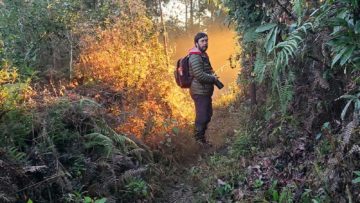 Michael Levin, a developmental biologist at Tufts University, has a knack for taking an unassuming organism and showing it’s capable of the darnedest things. He and his team once extracted skin cells from a frog embryo and cultivated them on their own. With no other cell types around, they were not “bullied,” as he put it, into forming skin tissue. Instead, they reassembled into a new organism of sorts, a “xenobot,” a coinage based on the Latin name of the frog species, Xenopus laevis. It zipped around like a paramecium in pond water. Sometimes it swept up loose skin cells and piled them until they formed their own xenobot—a type of self-replication. For Levin, it demonstrated how all living things have latent abilities. Having evolved to do one thing, they might do something completely different under the right circumstances.
Michael Levin, a developmental biologist at Tufts University, has a knack for taking an unassuming organism and showing it’s capable of the darnedest things. He and his team once extracted skin cells from a frog embryo and cultivated them on their own. With no other cell types around, they were not “bullied,” as he put it, into forming skin tissue. Instead, they reassembled into a new organism of sorts, a “xenobot,” a coinage based on the Latin name of the frog species, Xenopus laevis. It zipped around like a paramecium in pond water. Sometimes it swept up loose skin cells and piled them until they formed their own xenobot—a type of self-replication. For Levin, it demonstrated how all living things have latent abilities. Having evolved to do one thing, they might do something completely different under the right circumstances.
Not long ago I met Levin at a workshop on science, technology, and Buddhism in Kathmandu. He hates flying but said this event was worth it. Even without the backdrop of the Himalayas, his scientific talk was one of the most captivating I’ve ever heard. Every slide introduced some bizarre new experiment. Butterflies retain memories from when they were caterpillars, even though their brains turned to mush in the chrysalis. Cut off the head and tail of a planarian, or flatworm, and it can grow two new heads; if you amputate again, the worm will regrow both heads.
More here.
The Cult Of David Keenan
Francisco Garcia at The New Staesman:
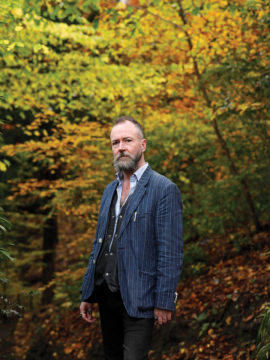
Memorial Device captures the glorious, drug-infused chaos of the Eighties post-punk scene in the small towns in North Lanarkshire, near Glasgow. With a vast array of characters – a revolving cast of freaks, dreamers, and burned-out, pissed-up or long-dead visionaries – Keenan depicts a time and place that existed, and the lingering reverberations of a legendary band that didn’t. “It’s not easy being Iggy Pop in Airdrie,” one character opines.
Subsequent novels by Keenan have since arrived at a dizzying pace. First came the Gordon Burn prize-winning For the Good Times (2019), an unhinged tale narrated by Sammy, an incarcerated IRA foot soldier who recalls the exhilarating anarchy of his life in 1970s Belfast. This was followed Xstabeth (2020), a ghostly continent-striding coming-of-age story, of sorts. Monument Maker (2021) was something else entirely, an uncompromising, 800-page postmodern epic, which seemed to record the full David Keenan cosmology.
more here.
Thursday Poem
The First Day’s Night Had Come
The first Day’s Night had come—
And grateful that a thing
So terrible—had been endured—
I told my Soul to sing—
She said her Strings were snapt—
Her Bow—to Atoms blown—
And so to mend her—gave me work
Until another Morn—
And then—A day as huge
As Yesterdays in pairs,
Unrolled its horror in my face—
Until it blocked my eyes—
My Brain—begun to laugh—
I mumbled—like a fool—
And tho’ tis years ago—that Day—
My Brain keeps giggling—still.
And Something’s odd—within—
That person that I was—
And this One—do not feel the same—
Could it be Madness—this?
by Emily Dickinson
from The Complete Poems of Emily Dickinson
Little, Brown and Company,1960
Wednesday, July 5, 2023
Obituary for a Quiet Life
Jeremy B. Jones in The Bitter Southerner:
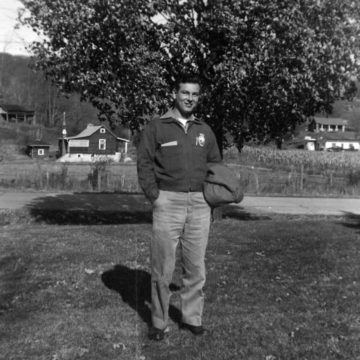 When the notable figures of our day pass away, they wind up on our screens, short clips documenting their achievements, talking heads discussing their influence. The quiet lives, though, pass on soundlessly in the background. And yet those are the lives in our skin, guiding us from breakfast to bed. They’re the lives that have made us, that keep the world turning.
When the notable figures of our day pass away, they wind up on our screens, short clips documenting their achievements, talking heads discussing their influence. The quiet lives, though, pass on soundlessly in the background. And yet those are the lives in our skin, guiding us from breakfast to bed. They’re the lives that have made us, that keep the world turning.
They’re taking out the trash before we notice and walking up the road to see if the mail’s come. They’re showing us how to lay out the biscuit dough at just the right thickness. They took our sons up on the tractor on spring afternoons. They helped the neighbor with the busted sink. They jumped in the river to pull an 18-month-old out. They caught the man who’d been pinned by the forklift, his back broken, and held him as he died. They slipped money into their nephew’s pocket when he hadn’t a penny to his name but was too ashamed to admit it. They did the laundry. They swept the floor. They played in the yard like a kid.
More here.
Record for hottest day ever recorded on Earth broken twice in a row
Madeleine Cuff in New Scientist:
 We have just experienced the hottest day ever recorded on Earth – for the second day in a row. The average global air temperature recorded 2 metres above Earth’s surface hit 17.18°C (62.92°F) on 4 July, according to data from the National Oceanic Atmospheric Administration (NOAA) and compiled by the University of Maine.
We have just experienced the hottest day ever recorded on Earth – for the second day in a row. The average global air temperature recorded 2 metres above Earth’s surface hit 17.18°C (62.92°F) on 4 July, according to data from the National Oceanic Atmospheric Administration (NOAA) and compiled by the University of Maine.
The new record outstrips the previous high of 17.01°C (62.62°F) set on 3 July. It makes 4 July the hottest day ever on Earth since records began.
Before that, the next highest-temperature on record was recorded jointly in August 2016 and July 2022, when average global temperatures reached 16.92°C (62.46°F).
More here.
Richard Feynman: Can Machines Think?
Why economic crashes boost globalization — and tear it apart
Mark Buchanan in Nature:
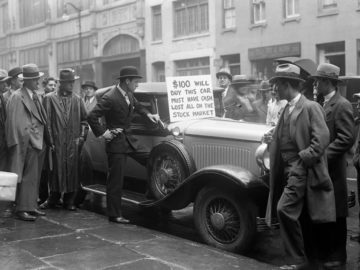 In the mid-1920s, the mood in the United States was buoyant. After years of surging economic growth, fuelled by expansion in the automobile industry and speculation in financial markets, the United States had the lowest debt of any large industrial nation. The future looked just as rosy. A 1926 article in The Wall Street Journal noted how “American wealth has doubled in the past dozen years”, delivering “a rate of progress that has never been known in Europe”.
In the mid-1920s, the mood in the United States was buoyant. After years of surging economic growth, fuelled by expansion in the automobile industry and speculation in financial markets, the United States had the lowest debt of any large industrial nation. The future looked just as rosy. A 1926 article in The Wall Street Journal noted how “American wealth has doubled in the past dozen years”, delivering “a rate of progress that has never been known in Europe”.
That astonishing uptick was real. Yet the exuberant mood vanished just a few years later with the stock-market crash of October 1929, followed by a wave of bank failures. As the trouble spread to Europe, more banks succumbed, and the world entered the Great Depression. But the seeds of this downturn were evident even during the boom. US authorities worried over how financial innovations — including the invention of derivative contracts such as options — had created a vast network of overextended investors engaging in risky speculation.
What was so new — and had for a time seemed so beneficial — led instead to profound upheaval and a global social and economic crisis.
Similar events, historian Harold James argues in his illuminating book Seven Crashes, recur across human history. Sudden outbursts of novelty presage most major economic crises.
More here.
Mind, Morality & Philosophy – Lynne Rudder Baker
The Eros of Shirley Hazzard
David Mason at the Hudson Review:
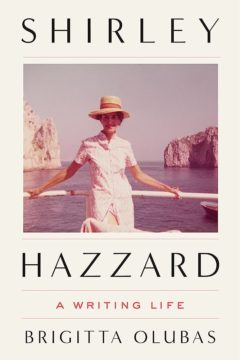 Among the literary genres, biography appears to be thriving. Perhaps it satisfies some element of life writing we also get from fiction, adding a dose of gossip and the illusion that we can actually know the truth of other people’s lives. There is always more than one way to tell a story. Some good recent biographies have been thematic or experimental: Katherine Rundell on John Donne, Frances Wilson on D. H. Lawrence, Andrew S. Curran on Diderot, Clare Carlisle on Kierkegaard. We have authoritative doorstoppers from Langdon Hammer on James Merrill to Heather Clark’s numbingly detailed book on Sylvia Plath. And we find a happy medium-sized biography in Mark Eisner’s on Neruda or Ann-Marie Priest’s on the great Australian poet Gwen Harwood. Among the best of these, Brigitta Olubas’ Shirley Hazzard: A Writing Life is not overstuffed or particularly arcane in structure, not weighted down with newly discovered scandal, but lucidly and even gracefully organized, guided by a compelling thesis.[1] Olubas believes, and I agree, that Hazzard pursued one erotic object more than all others, poetry, which is inseparable from Eros in its other meanings. “This . . . large belief in romantic and sexual love stands behind all Shirley Hazzard’s writing,” Olubas tells us. “It is aligned with her sense of human connectedness and above all with poetry, which is at heart for her a way of being human.”
Among the literary genres, biography appears to be thriving. Perhaps it satisfies some element of life writing we also get from fiction, adding a dose of gossip and the illusion that we can actually know the truth of other people’s lives. There is always more than one way to tell a story. Some good recent biographies have been thematic or experimental: Katherine Rundell on John Donne, Frances Wilson on D. H. Lawrence, Andrew S. Curran on Diderot, Clare Carlisle on Kierkegaard. We have authoritative doorstoppers from Langdon Hammer on James Merrill to Heather Clark’s numbingly detailed book on Sylvia Plath. And we find a happy medium-sized biography in Mark Eisner’s on Neruda or Ann-Marie Priest’s on the great Australian poet Gwen Harwood. Among the best of these, Brigitta Olubas’ Shirley Hazzard: A Writing Life is not overstuffed or particularly arcane in structure, not weighted down with newly discovered scandal, but lucidly and even gracefully organized, guided by a compelling thesis.[1] Olubas believes, and I agree, that Hazzard pursued one erotic object more than all others, poetry, which is inseparable from Eros in its other meanings. “This . . . large belief in romantic and sexual love stands behind all Shirley Hazzard’s writing,” Olubas tells us. “It is aligned with her sense of human connectedness and above all with poetry, which is at heart for her a way of being human.”
more here.
Small Fires: An Epic in the Kitchen
Marian Bull at n+1:
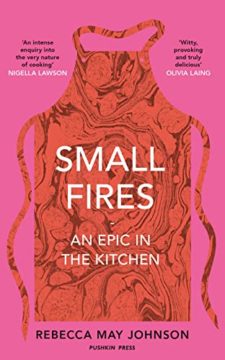 IN A 2013 AFTERWORD to the combined reprint of her memoirs Comfort Me with Apples and Tender at the Bone, Ruth Reichl reflects back on writing the latter: “When I was writing Tender at the Bone, the food memoir didn’t exist. . . . As I was trying to think about telling my story through food, it occurred to me that the recipes could function the way photographs did in other people’s books.” While MFK Fisher, Julia Child, Elizabeth David, and other 20th-century food writers had dabbled in autobiography, the 21st-century food memoir owes itself to Reichl, whose 1998 bestseller created a template and boom market for others like it. The book traces her evolution as a person through the food she cooked and ate as a child, then as a teenager, then as a young woman, each chapter’s lesson or metaphor punctuated with a recipe. From the first chapter, food is a cipher for emotion and personality; recipes refract a time, a place, a feeling. While some people may look back at a photo album to remember their own emotional history, Reichl conjures up a lifetime of meals.
IN A 2013 AFTERWORD to the combined reprint of her memoirs Comfort Me with Apples and Tender at the Bone, Ruth Reichl reflects back on writing the latter: “When I was writing Tender at the Bone, the food memoir didn’t exist. . . . As I was trying to think about telling my story through food, it occurred to me that the recipes could function the way photographs did in other people’s books.” While MFK Fisher, Julia Child, Elizabeth David, and other 20th-century food writers had dabbled in autobiography, the 21st-century food memoir owes itself to Reichl, whose 1998 bestseller created a template and boom market for others like it. The book traces her evolution as a person through the food she cooked and ate as a child, then as a teenager, then as a young woman, each chapter’s lesson or metaphor punctuated with a recipe. From the first chapter, food is a cipher for emotion and personality; recipes refract a time, a place, a feeling. While some people may look back at a photo album to remember their own emotional history, Reichl conjures up a lifetime of meals.
more here.
On killing charles Dickens
Zadie Smith in The New Yorker:
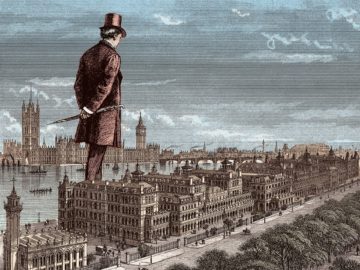 For the first thirty years of my life, I lived within a one-mile radius of Willesden Green Tube Station. It’s true I went to college—I even moved to East London for a bit—but such interludes were brief. I soon returned to my little corner of North West London. Then suddenly, quite abruptly, I left not just the city but England itself. First for Rome, then Boston, and then my beloved New York, where I stayed ten years. When friends asked why I’d left the country, I’d sometimes answer with a joke: Because I don’t want to write a historical novel. Perhaps it was an in-joke: only other English novelists really understood what I meant by it. And there were other, more obvious reasons. My English father had died. My Jamaican mother was pursuing a romance in Ghana. I myself had married an Irish poet who liked travel and adventure and had left the island of his birth at the age of eighteen. My ties to England seemed to be evaporating. I would not say I was entirely tired of London. No, I was not yet—in Samuel Johnson’s famous formulation—“tired of life.” But I was definitely weary of London’s claustrophobic literary world, or at least the role I had been assigned within it: multicultural (aging) wunderkind. Off I went.
For the first thirty years of my life, I lived within a one-mile radius of Willesden Green Tube Station. It’s true I went to college—I even moved to East London for a bit—but such interludes were brief. I soon returned to my little corner of North West London. Then suddenly, quite abruptly, I left not just the city but England itself. First for Rome, then Boston, and then my beloved New York, where I stayed ten years. When friends asked why I’d left the country, I’d sometimes answer with a joke: Because I don’t want to write a historical novel. Perhaps it was an in-joke: only other English novelists really understood what I meant by it. And there were other, more obvious reasons. My English father had died. My Jamaican mother was pursuing a romance in Ghana. I myself had married an Irish poet who liked travel and adventure and had left the island of his birth at the age of eighteen. My ties to England seemed to be evaporating. I would not say I was entirely tired of London. No, I was not yet—in Samuel Johnson’s famous formulation—“tired of life.” But I was definitely weary of London’s claustrophobic literary world, or at least the role I had been assigned within it: multicultural (aging) wunderkind. Off I went.
More here.
Anti-ageing protein injection boosts monkeys’ memories
Lilly Tozer in Nature:
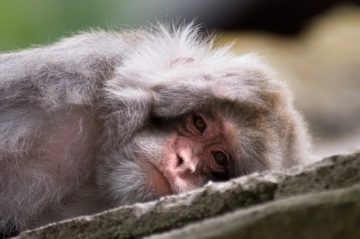 Injecting ageing monkeys with a ‘longevity factor’ protein can improve their cognitive function, a study reveals. The findings, published on 3 July in Nature Aging1, could lead to new treatments for neurodegenerative diseases.
Injecting ageing monkeys with a ‘longevity factor’ protein can improve their cognitive function, a study reveals. The findings, published on 3 July in Nature Aging1, could lead to new treatments for neurodegenerative diseases.
It is the first time that restoring levels of klotho — a naturally occurring protein that declines in our bodies with age — has been shown to improve cognition in a primate. Previous research on mice had shown that injections of klotho can extend the animals’ lives and increases synaptic plasticity2 — the capacity to control communication between neurons, at junctions called synapses. “Given the close genetic and physiological parallels between primates and humans, this could suggest potential applications for treating human cognitive disorders,” says Marc Busche, a neurologist at the UK Dementia Research Institute group at University College London. The protein is named after the Greek goddess Clotho, one of the Fates, who spins the thread of life.
More here.
Wednesday Poem
Bonfire Opera, Small Kindnesses and Omens
In those days, there was a woman in our circle
who was known, not only for her beauty,
but for taking off all her clothes and singing opera.
And sure enough, as the night wore on and the stars
emerged to stare at their reflections on the sea,
and everyone had drunk a little wine,
she began to disrobe, loose her great bosom,
and the tender belly, pale in the moonlight,
the Viking hips, and to let her torn raiment
fall to the sand as we looked up from the flames.
And then a voice lifted into the dark, high and clear
as a flock of blackbirds. And everything was very still,
the way the congregation quiets when the priest
prays over the incense, and the smoke wafts
up into the rafters. I wanted to be that free
inside the body, the doors of pleasure
opening, one after the next, an arpeggio
climbing the ladder of sky. And all the while
she was singing and wading into the water
until it rose up to her waist and then lapped
at the underside of her breasts, and the aria
drifted over us, her soprano spare and sharp
in the night air. And even though I was young,
somehow, in that moment, I heard it,
the song inside the song, and I knew then
that this was not the hymn of promise
but the body’s bright wailing against its limits.
A bird caught in a cathedral—the way it tries
to escape by throwing itself, again and again,
against the stained glass.
by Danusha Laméris
from American Poetry Review VOL. 46/No.3
Tuesday, July 4, 2023
Consciousness Vs Intelligence
Pasolini on Caravaggio’s Artificial Light
Pier Paolo Pasolini at The Paris Review:
 Anything I could ever know about Caravaggio derives from what Roberto Longhi had to say about him. Yes, Caravaggio was a great inventor, and thus a great realist. But what did Caravaggio invent? In answering this rhetorical question, I cannot help but stick to Longhi’s example. First, Caravaggio invented a new world that, to invoke the language of cinematography, one might call profilmic. By this I mean everything that appears in front of the camera. Caravaggio invented an entire world to place in front of his studio’s easel: new kinds of people (in both a social and characterological sense), new kinds of objects, and new kinds of landscapes. Second: Caravaggio invented a new kind of light. He replaced the universal, platonic light of the Renaissance with a quotidian and dramatic one. Caravaggio invented both this new kind of light and new kinds of people and things because he had seen them in reality. He realized that there were individuals around him who had never appeared in the great altarpieces and frescoes, individuals who had been marginalized by the cultural ideology of the previous two centuries. And there were hours of the day—transient, yet unequivocal in their lighting—which had never been reproduced, and which were pushed so far from habit and use that they had become scandalous, and therefore repressed. So repressed, in fact, that painters (and people in general) probably didn’t see them at all until Caravaggio.
Anything I could ever know about Caravaggio derives from what Roberto Longhi had to say about him. Yes, Caravaggio was a great inventor, and thus a great realist. But what did Caravaggio invent? In answering this rhetorical question, I cannot help but stick to Longhi’s example. First, Caravaggio invented a new world that, to invoke the language of cinematography, one might call profilmic. By this I mean everything that appears in front of the camera. Caravaggio invented an entire world to place in front of his studio’s easel: new kinds of people (in both a social and characterological sense), new kinds of objects, and new kinds of landscapes. Second: Caravaggio invented a new kind of light. He replaced the universal, platonic light of the Renaissance with a quotidian and dramatic one. Caravaggio invented both this new kind of light and new kinds of people and things because he had seen them in reality. He realized that there were individuals around him who had never appeared in the great altarpieces and frescoes, individuals who had been marginalized by the cultural ideology of the previous two centuries. And there were hours of the day—transient, yet unequivocal in their lighting—which had never been reproduced, and which were pushed so far from habit and use that they had become scandalous, and therefore repressed. So repressed, in fact, that painters (and people in general) probably didn’t see them at all until Caravaggio.
more here.
Thunderclap: A Memoir of Art & Life & Sudden Death
Norma Clarke at Literary Review:
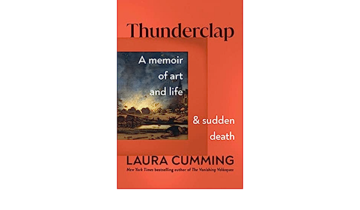 ‘We see pictures in time and place … They are fragments of our lives, moments of existence that may be as unremarkable as rain or as startling as a clap of thunder,’ Cumming writes. A love of Dutch art and a passion for looking at pictures were bequeathed to Cumming by her artist parents. She wrote about her mother’s fragmented, mysterious early life in On Chapel Sands (2019). In Thunderclap it is Laura’s father, James Cumming, who takes centre stage, and like On Chapel Sands the book is infused with love – of parents, childhood, pictures and words. It is at once deeply personal and inclusive, because it is about the shared experience of looking at pictures and the shared desire to know and understand what these ‘moments of existence’ mean. I liked reading Thunderclap so much that I immediately reread On Chapel Sands. Together, these books are a remarkable experiment in form as well as a richly satisfying extended meditation on art, life and death.
‘We see pictures in time and place … They are fragments of our lives, moments of existence that may be as unremarkable as rain or as startling as a clap of thunder,’ Cumming writes. A love of Dutch art and a passion for looking at pictures were bequeathed to Cumming by her artist parents. She wrote about her mother’s fragmented, mysterious early life in On Chapel Sands (2019). In Thunderclap it is Laura’s father, James Cumming, who takes centre stage, and like On Chapel Sands the book is infused with love – of parents, childhood, pictures and words. It is at once deeply personal and inclusive, because it is about the shared experience of looking at pictures and the shared desire to know and understand what these ‘moments of existence’ mean. I liked reading Thunderclap so much that I immediately reread On Chapel Sands. Together, these books are a remarkable experiment in form as well as a richly satisfying extended meditation on art, life and death.
more here.
James Baldwin in Turkey
Azareen Van der Vliet Oloomi in The Yale Review:
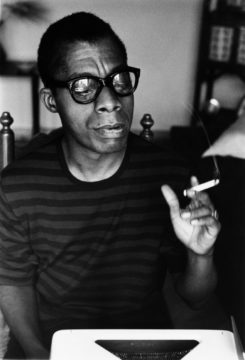 The eleven-minute black and white documentary, James Baldwin: From Another Place, directed by Sedat Pakay and filmed in Istanbul in May 1970, opens with a shot of Baldwin lying supine in a large bed in a sparsely decorated room. The curtains are closed. Baldwin throws back the covers and gets up; he is wearing nothing but a pair of white briefs. He turns his back to the camera and opens the curtains. A sharp Mediterranean light floods in. Baldwin scratches the small of his back, and we hear him say in voiceover: “I suppose that many people do blame me for being out of the States as often as I am, but one can’t afford to worry about that because one does, you know, you do what you have to do the way you have to do it. And as someone who is outside of the States you realize that it’s impossible to get out, the American powers are everywhere.” The camera pans over the glittering Bosphorus Strait as American ships glide silently through the passage connecting Asia and Europe.
The eleven-minute black and white documentary, James Baldwin: From Another Place, directed by Sedat Pakay and filmed in Istanbul in May 1970, opens with a shot of Baldwin lying supine in a large bed in a sparsely decorated room. The curtains are closed. Baldwin throws back the covers and gets up; he is wearing nothing but a pair of white briefs. He turns his back to the camera and opens the curtains. A sharp Mediterranean light floods in. Baldwin scratches the small of his back, and we hear him say in voiceover: “I suppose that many people do blame me for being out of the States as often as I am, but one can’t afford to worry about that because one does, you know, you do what you have to do the way you have to do it. And as someone who is outside of the States you realize that it’s impossible to get out, the American powers are everywhere.” The camera pans over the glittering Bosphorus Strait as American ships glide silently through the passage connecting Asia and Europe.
Pakay’s film has long been almost impossible to see in the United States, aside from a short clip on YouTube. But in February, it began streaming on the Criterion Channel, and its reappearance is a useful occasion to re-examine one of the most important, and yet relatively unknown, aspects of Baldwin’s career: his time in Turkey.
More here.
An Enormous Gravity ‘Hum’ Moves Through the Universe
Jonathan O’Callaghan in Quanta:
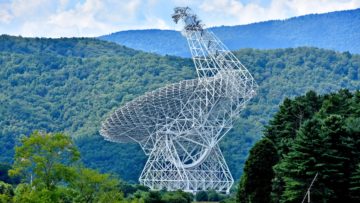 The discovery, announced today, shows that extra-large ripples in space-time are constantly squashing and changing the shape of space. These gravitational waves are cousins to the echoes from black hole collisions first picked up by the Laser Interferometer Gravitational-Wave Observatory (LIGO) experiment in 2015. But whereas LIGO’s waves might vibrate a few hundred times a second, it might take years or decades for a single one of these gravitational waves to pass by at the speed of light.
The discovery, announced today, shows that extra-large ripples in space-time are constantly squashing and changing the shape of space. These gravitational waves are cousins to the echoes from black hole collisions first picked up by the Laser Interferometer Gravitational-Wave Observatory (LIGO) experiment in 2015. But whereas LIGO’s waves might vibrate a few hundred times a second, it might take years or decades for a single one of these gravitational waves to pass by at the speed of light.
The finding has opened a wholly new window on the universe, one that promises to reveal previously hidden phenomena such as the cosmic whirling of black holes that have the mass of billions of suns, or possibly even more exotic (and still hypothetical) celestial specters.
More here.
